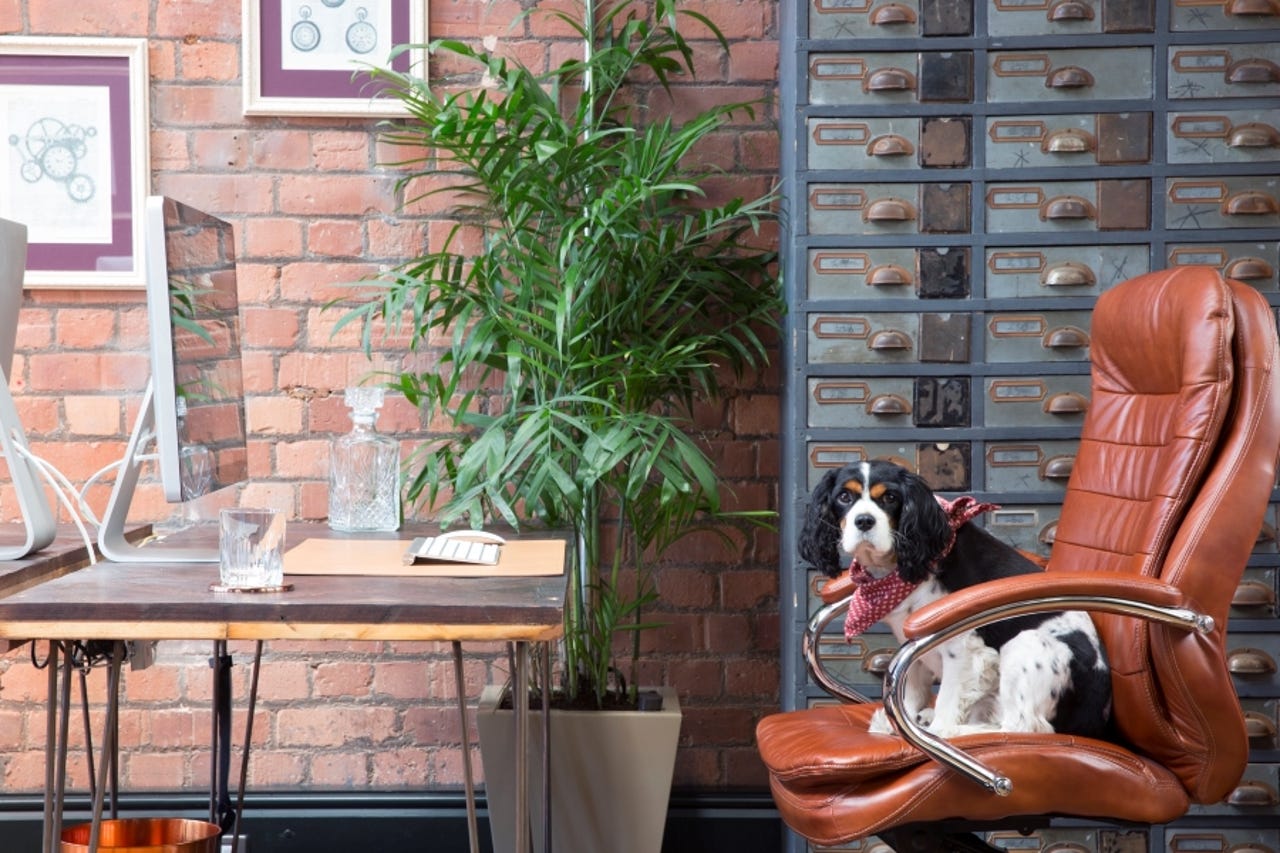'Come for the free lunch': How one company is rethinking its office for remote workers


Steamhaus' offices in Manchester, UK.
Now that remote working has become something of a standard, companies are having to figure out what role the office plays in their new, more distributed working environment.
For Dan Faraday-Foster, managing director and founder of Manchester, UK-based cloud consultancy Steamhaus, the purpose of the physical workplace is to serve as a place that can be used in whichever way suits the employee. And if the answer to that is 'not at all', then so be it.
"You can just come in for the free lunch, or for just the workshop or the meeting," Faraday-Foster tells ZDNet. "We can all do all of our actual work remotely."
Steamhaus was largely used to remote working prior to 2020, meaning when COVID-19 hit, the company already had the tools and experience to make things work.
Special Feature
That's not to say it's been without issue: Faraday-Foster is conscious of 'Slack fatigue' and the burnout associated with long bouts of working at a computer with minimal social interaction. This is why he believes it's still important to have an office for employees to use should they wish to, although there's no pressure on anyone to come into the office at all. If they want, employees can drop in purely for the free lunch or yoga sessions, then go back home to work.
"I'm really trying to get the message across that, if you've got a friend or a partner and want to bring them in to use the office because they're both working from home, you don't need to ask permission, just use it as your space," he says – though he hastens to add that this doesn't include inviting 50 friends over for a party.
SEE: The future of work: How everything changed and what's coming next
Shaking off old expectations around how and where employees do their work isn't going to happen overnight. Even companies that have been quick to adapt to hybrid working post-pandemic face a long period of learning and experimentation, and will need to remain agile so they can respond to changes on-the-fly.
This means being willing to dump anything that doesn't work, particularly when it comes to apps and software. "We played around with a lot of tools, tried them out, abandoned some of them... if people don't use them then clearly it's not the right thing," says Faraday-Foster.
Physical aspects of the office are also being revisited to fit with the needs of a more transient workforce, the dominant thinking behind this being that offices should be a place where colleagues come together to collaborate and socialise, rather than spend a day behind a desk. For some organizations, this has meant stripping out desks to make room for high-tech meeting spaces, comfy lounge areas, and trendy soundproof pods.
"I've looked at this pods thing, which are all hideously expensive, but we're going to incorporate some of those into the design of what we're doing," says Faraday-Foster.
It seems like a strange time to be investing in office space, given that many employees are happy to continue working remotely, which has no doubt left many of their colleagues sitting alone in empty offices with nothing but free coffee to keep them stimulated.
Faraday-Foster admits that Steamhaus had briefly considered getting rid of the office entirely and allowing employees to use co-working space when needed, but eventually agreed that the company needed "a place that's ours".
SEE: Remote and hybrid work: 5 tips for making it a success
Even so, keeping the office potentially puts employees on an uneven playing field based on their working preferences. It's, therefore, important as a leader to ensure that employees do not feel left out, excluded or isolated by deciding to work from home. There's a balance to be struck here, yet it remains elusive. "There must be absolutely no difference in what a member of staff has access to whether they ever come into the office or not," says Faraday-Foster.
This means encouraging everyone to use their own laptops for meetings, regardless of whether they are in the office or at home – though Steamhaus tries to avoid meetings anyway, with Faraday-Foster branding them "a legacy of the old office."
Feeding culture
Recreating a strong workplace culture is also more difficult when employees aren't centred around a social location.
With fewer opportunities for impromptu office encounters and chats around the coffee machine, there has to be a more deliberate attempt to get employees together.
"We're constantly trying to think of new ideas for bringing people together socially," says Faraday-Foster. "It's a real challenge to achieve that same thing in a remote manner."
SEE: Is remote working here to stay? The data might surprise you
He continues: "We've tried the Friday afternoon Zoom thing. I came to the realization that the 20 of us wouldn't sit in the pub in a big circle, and those things are awkward and forced."
Food is a proven method of getting people around a table. A number of Steamhaus employees are avid cooks, says Faraday-Foster, so the company is building a kitchen where employees can come together to cook and share meals together.
This has resulted in another important investment, says the MD: "I can't believe it's taken as long as it has to get a drinks fridge. I think that's almost a prerequisite!"
When it comes to the challenges hybrid work presents to his own role as managing director, Faraday-Foster acknowledges that there are many things that will take some time to adjust to, or otherwise require a lot of trial and error.
One of these challenges is the management of employees. "The thing I struggle with is that you have less visibility," he says. And Faraday-Fosters says it was important that Steamhaus employees "realize that they don't need to work until 11pm at night."
"I'm really conscious of burnout," he adds. "As an MD, a massive part of my job is making sure everyone is happy, as well as all the usual making sure the company is financially OK… it's a real challenge to achieve that same thing in a remote manner."
Despite the uncertainties that lie ahead, Faraday-Foster is certain of one thing – he has no intention of ordering Steamhaus employees back to their desks: "If we did that, we'd probably lose half of our staff."